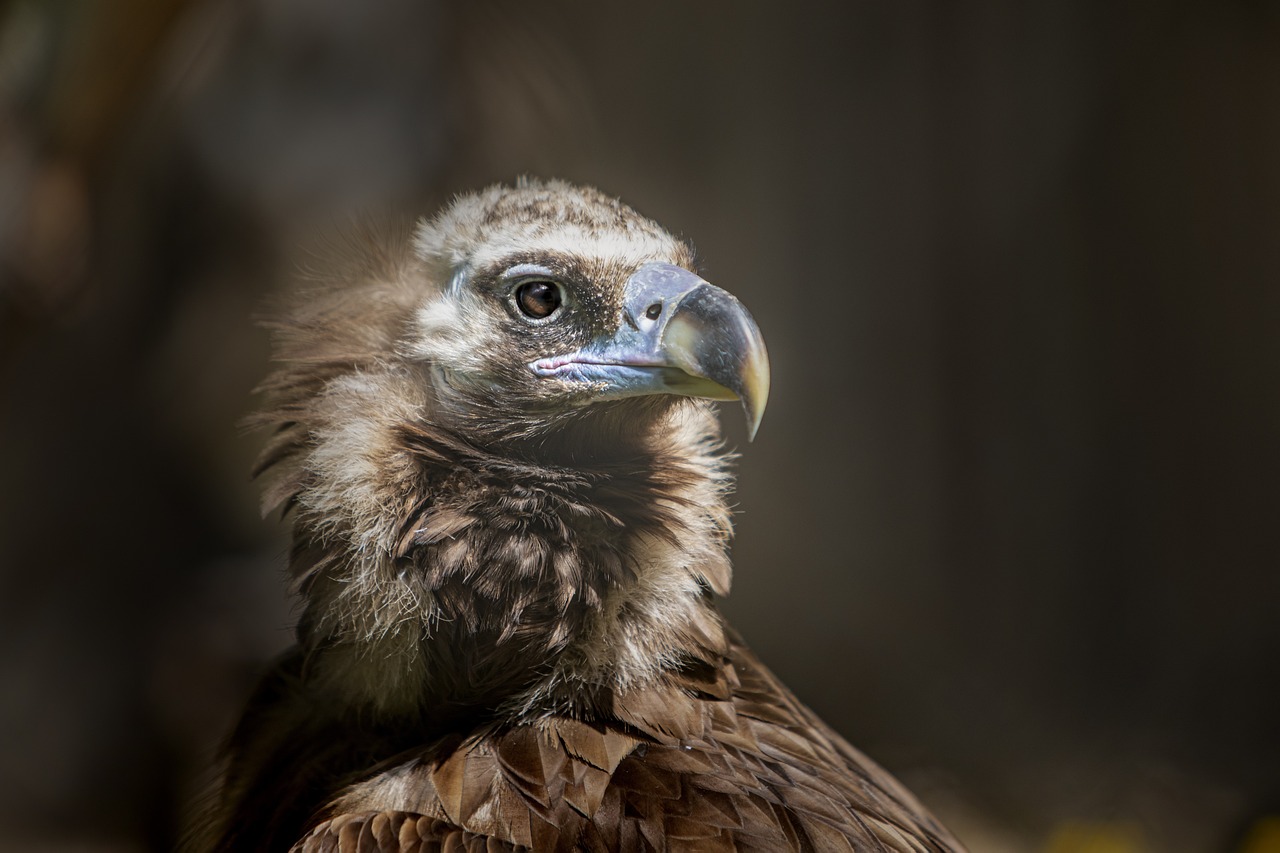The Cinereous Vulture (Aegypius monachus), also known as the Eurasian Black Vulture or Monk Vulture, is one of the largest and most impressive birds of prey in the world. Here is a detailed overview of this majestic species:
Description
- Size: The Cinereous Vulture is among the largest birds of prey, with a wingspan ranging from 2.5 to 3 meters (8.2 to 9.8 feet) and a body length of about 1 to 1.2 meters (3.3 to 3.9 feet). They can weigh between 7 and 14 kilograms (15 to 31 pounds).
- Appearance: These vultures have dark brown to black plumage, a large head, and a powerful beak. Their head and neck are covered with fine down, giving a slightly fluffy appearance. They have piercing dark eyes and a hooked beak ideal for tearing flesh.
- Flight: In flight, they are characterized by their broad wings and slow, steady wingbeats, soaring high with minimal effort.
Habitat
- Distribution: The Cinereous Vulture is found across a wide range in Eurasia, from the Iberian Peninsula in the west to Korea and Japan in the east. They are primarily found in mountainous and forested regions.
- Preferred Environment: These vultures prefer open landscapes like steppe, meadows, and mountain ranges, often nesting in remote, undisturbed areas with large trees or cliffs.
Behavior and Ecology
- Diet: Cinereous Vultures are primarily scavengers, feeding mainly on carrion. They have powerful beaks capable of tearing through tough hides and bones. While they mainly consume dead animals, they may occasionally kill small or weak animals if carrion is scarce.
- Nesting: They build large nests made of sticks and lined with softer materials such as grass, leaves, and fur. Nests are typically constructed in tall trees or on cliff ledges. A pair may use the same nest for several years, adding new material each breeding season.
- Reproduction: The breeding season varies by region but usually occurs in the spring. The female lays a single egg, which both parents incubate for about 50 to 55 days. After hatching, the chick is cared for by both parents and fledges at around 3 to 4 months of age.
- Lifespan: In the wild, Cinereous Vultures can live up to 20-30 years, and even longer in captivity.
Conservation Status
- Threats: The primary threats to the Cinereous Vulture include habitat destruction, poisoning (often from ingesting poisoned baits intended for other animals), and human disturbance. Declines in available carrion due to changes in livestock farming practices also pose a significant threat.
- Conservation Efforts: Conservation programs focus on habitat protection, anti-poisoning campaigns, and maintaining food availability. Some regions have established vulture restaurants, where safe, uncontaminated carrion is provided for these and other scavenger species.
Interesting Facts
- Social Structure: While not as social as some other vulture species, Cinereous Vultures can often be seen in small groups, particularly around abundant food sources.
- Strength and Size: Their impressive size and strength allow them to dominate over other scavengers, including other vulture species, when competing for food.
- Cultural Significance: In some cultures, vultures are revered for their role in the ecosystem as cleaners, preventing the spread of disease by consuming dead animals.
Observing Cinereous Vultures
- Best Places: Key places to observe Cinereous Vultures include national parks and nature reserves across their range. In Europe, they can be seen in Spain and Greece, while in Asia, they are found in Mongolia, China, and parts of the Russian Federation.
- Watching Tips: When observing these vultures, it’s best to keep a respectful distance, especially during the breeding season to avoid disturbing nests. Binoculars or a spotting scope can provide excellent views without causing stress to the birds.
The Cinereous Vulture is a vital part of the ecosystem, playing a crucial role in nature’s cleanup crew. Conservation efforts are essential to ensure the survival of this magnificent species, whose presence enriches the biodiversity of the regions they inhabit.
Visited 846 times, 4 visit(s) today
Views: 1207
Subscribe to the newsletter:
